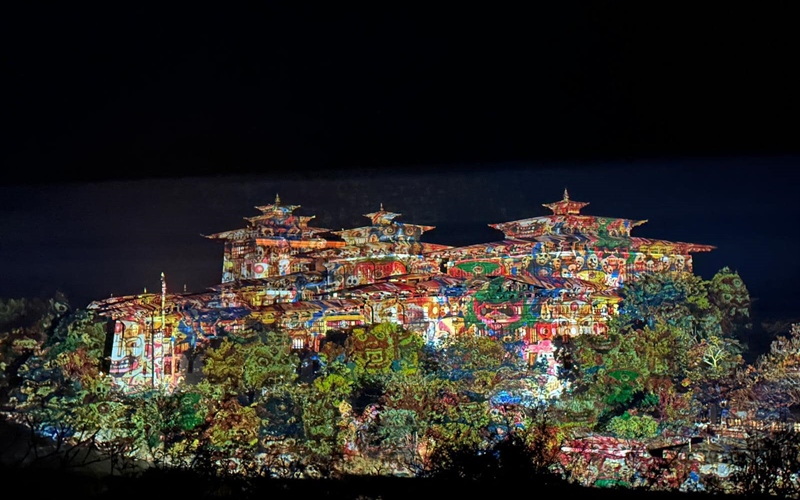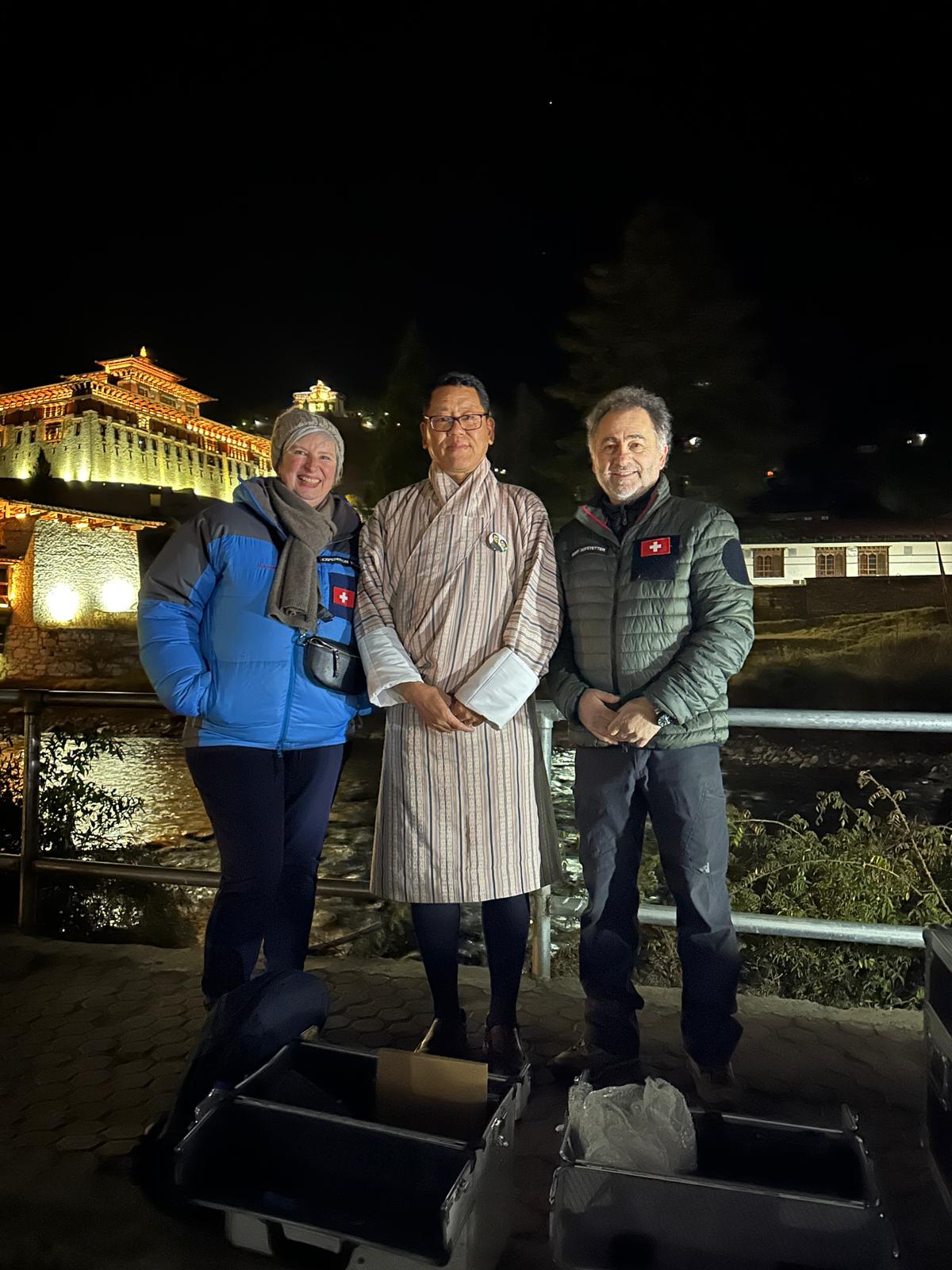Illuminating Bhutan: Gerry Hofstetter’s Light Art Transforms National Monuments
Gerry Hofstetter, a Swiss light artist and filmmaker, brought a luminous touch to Bhutan with his breathtaking projections, transforming historic monuments into artistic displays.

His art, blending tradition with innovation, captivated the hearts of the Bhutanese people, offering a fresh perspective on their rich cultural heritage.
“Light created life,” Hofstetter said, emphasising the universal nature of his art. “It’s inside every plant, every animal, and every person. My projections aim to connect people to their roots, blending their history, culture, and aspirations for the future. Light is hope, and through my art, I hope to inspire joy and pride.”
Hofstetter’s journey to Bhutan was made possible by his friends, Renato Martellosio and his wife, Sonja Riva, from Switzerland. Renato spearheaded the entire endeavour – handling all the logistics, making key connections, and overseeing the entire tour.
Logistical hurdles from Switzerland to Bhutan
The Swiss artist arrived with 1.5 tons of specialised equipment, a logistical feat involving multiple flights and trucks traversing challenging terrains. “Bringing my equipment from Switzerland to Bhutan was a massive expedition,” he said. “We flew to Calcutta and transported everything by road. There were countless challenges, from customs issues to damaged projectors that needed repairs.”
One significant obstacle was Bhutan’s pristine environment. “The air here is so clear, and the full moon was so bright that our initial projection on a mountain wasn’t visible,” he said. This led to a shift in location. “We moved to the Buddha Dordenma statue, and it worked beautifully. The moonlight wasn’t a problem anymore, and the results were stunning.”
Blend of art and purpose
Hofstetter’s art is deeply rooted in Bhutanese culture. He meticulously studied the country’s traditions and history, incorporating these elements into his designs. “I’m not an artist who imposes my vision on a place,” he said. “I want to understand the Bhutanese people and give them their monuments and messages illuminated in light.”
His projections featured iconic symbols such as the dragon from the national flag, tigers, and prayer flags, rendered with intricate precision. “These aren’t just light shows,” he said. “They’re a celebration of Bhutan’s identity. When people see their monuments illuminated with these symbols, they feel pride and connection to their heritage.”
For Hofstetter, Bhutan marks the 88th country where he has showcased his art. “Bhutan is the land of happiness,” he said. “It’s an honour to contribute to that happiness with my work. Light has the power to inspire, and I wanted to amplify the joy this country already embodies.”
The National Day celebrations were a testament to Hofstetter’s ability to merge art with purpose. His team worked tirelessly to meet tight deadlines with assistance from Bhutanese collaborators. “When the Prime Minister invited me to light up the buildings for the National Day, I felt deeply honoured,” Hofstetter shared.




Beyond National Day, Hofstetter’s projections spanned iconic locations including the Tiger’s Nest Monastery and Punakha Dzong. “Each day, we are creating something new,” he said. “Tonight, we will project at Tiger’s Nest, tomorrow at Punakha, and later at Dochula Pass. Each site presents unique opportunities and challenges, but the goal is always the same: to bring light and happiness to the people.”
View this post on Instagram
Looking ahead, Hofstetter hopes to return to Bhutan with grander plans. “Next year, I’d love to project the dragon on a 7,000-metre-high mountain,” he said. “It would symbolise Bhutan’s purity, tradition, and its identity as the land of the Thunder Dragon. Such a projection would capture global attention, showcasing Bhutan as a clean, unique, and inspiring country.”
Using art to convey an important message
He also plans to participate in the United Nations’ Year of Glacier Preservation, using his art to highlight the urgent need to protect glaciers. “In 40 years, half of the glaciers will be gone,” he said. “Through my ‘Save Our Souls’ or ‘Save Our Species’ (SOS) World Tour, I will project massive letters visible from space, urging the world to act. Bhutan’s pristine glaciers would be a perfect location for this message.”
Reflecting on his experience in Bhutan, Hofstetter expressed profound gratitude. “I’m happy to be here,” he said. “Bhutan is a land of happiness, and its people have been incredibly welcoming. My art is about making every spectator feel at home, to see their culture and traditions reflected in light.”
As Hofstetter continues his global journey, Bhutan will undoubtedly remain a highlight in his career. Through his light projections, he has illuminated not only the country’s landmarks but also its spirit, leaving an indelible mark on its cultural tapestry. “Light inspires, connects, and brings hope,” he said. “And in Bhutan, it has done all that and more.”














